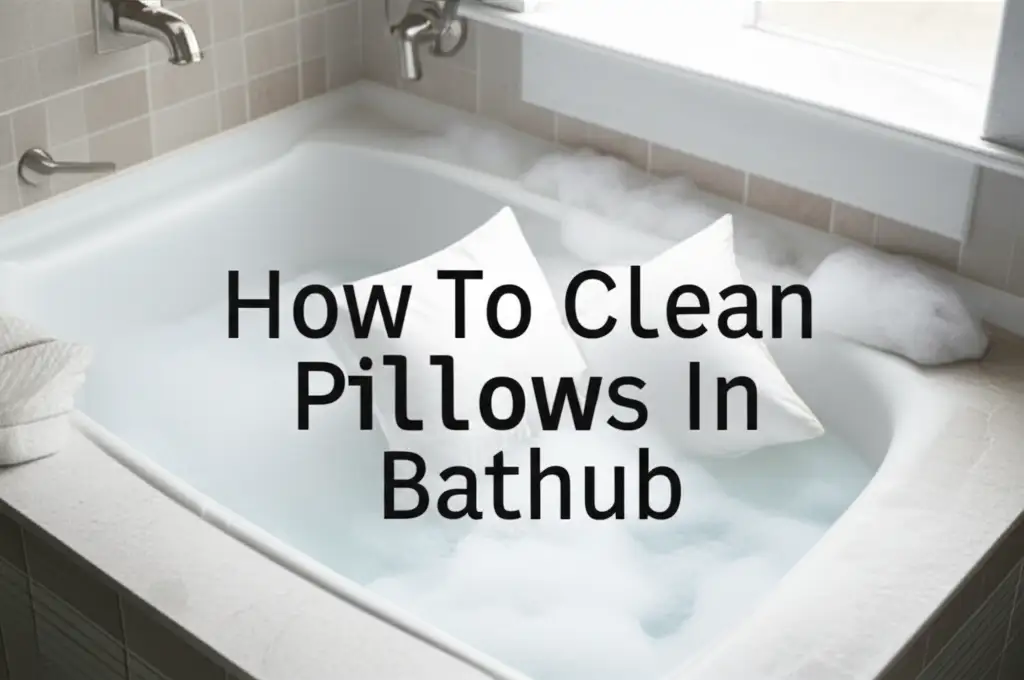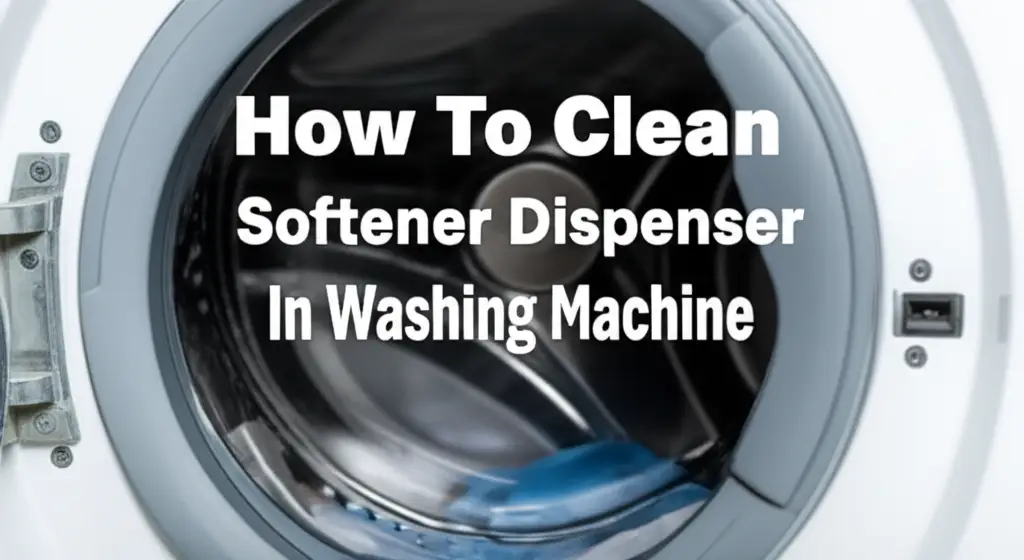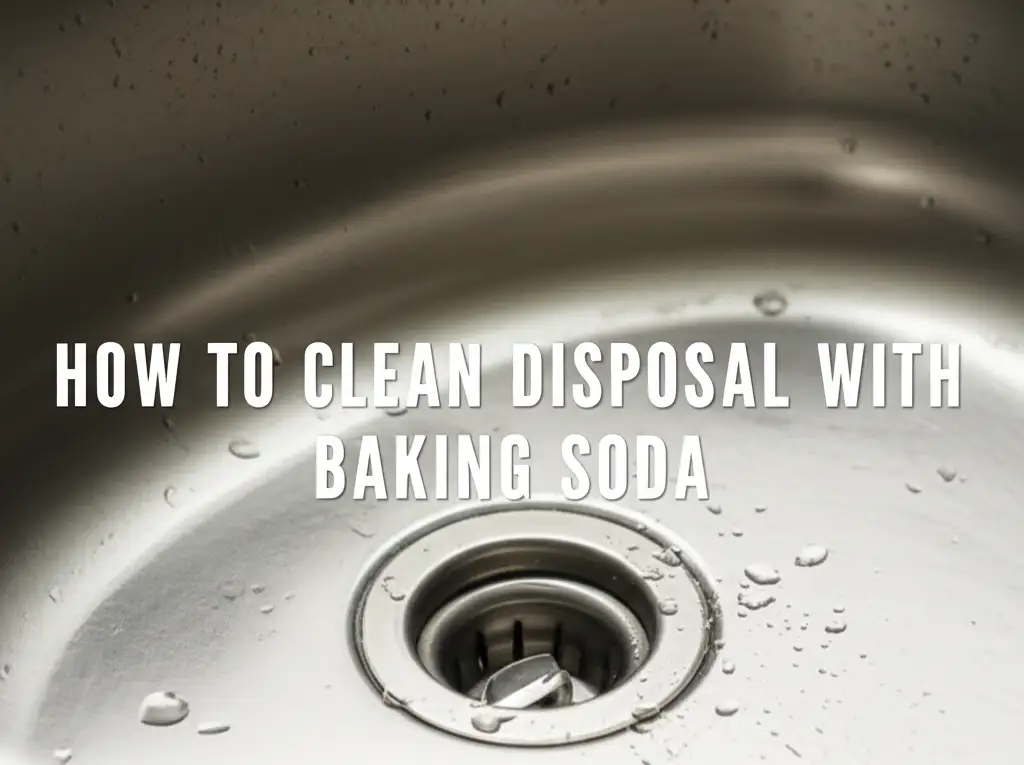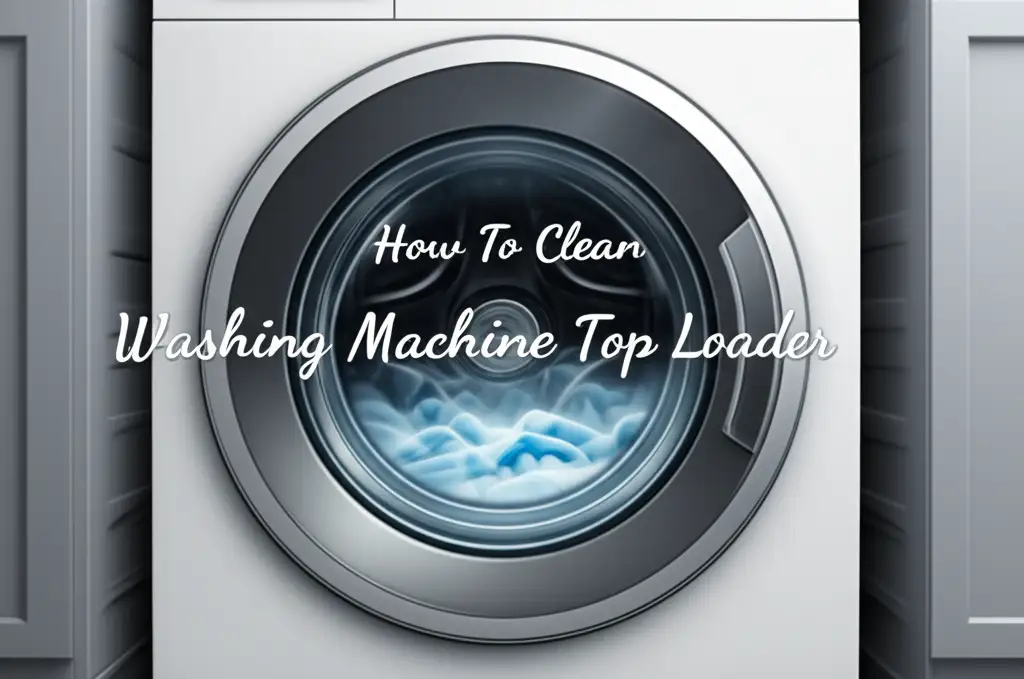· Laundry Care, Home Cleaning, Natural Cleaning · 16 min read
How To Clean Pillows With Baking Soda
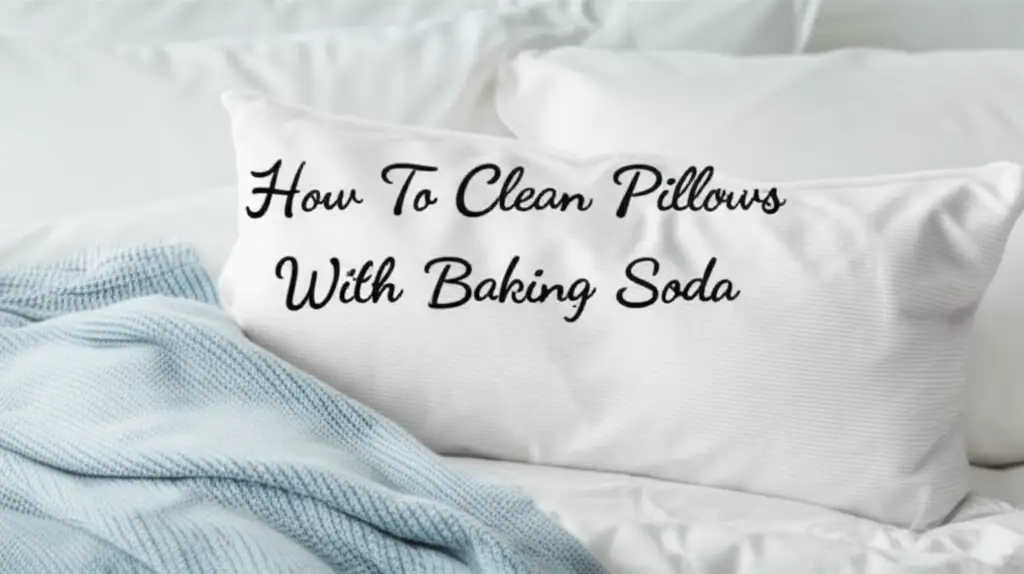
How To Clean Pillows With Baking Soda For A Fresher Sleep
A good night’s sleep starts with a clean pillow. Your pillow supports your head for hours each night. It absorbs sweat, oils, and dead skin cells. Over time, pillows can become discolored, develop odors, and house dust mites. Many people do not realize how simple it is to clean pillows. Baking soda offers a natural and effective solution for pillow hygiene. This article will show you exactly how to clean pillows with baking soda. We will cover dry methods, wet methods, and tips for different pillow types. You will learn easy steps to keep your pillows fresh. This improves your sleep environment and extends pillow life. Get ready to transform your bedtime comfort.
Takeaway
- Dry Deodorize: Sprinkle baking soda on pillows to absorb odors and moisture.
- Deep Clean: Add baking soda to your washing machine for a more thorough wash.
- Spot Treat: Use a baking soda paste for specific stains on pillow surfaces.
- Maintain Freshness: Air pillows regularly and use protective covers.
How do you clean pillows with baking soda?
You clean pillows with baking soda by sprinkling it directly on the pillow surface to absorb odors and moisture. For deeper cleaning, you can add baking soda to your washing machine alongside your regular detergent when washing machine-safe pillows. This natural compound effectively neutralizes smells and brightens fabrics.
Why Clean Your Pillows? More Than Just Freshness
Your pillow works hard every night. It cradles your head for a third of your life. This close contact means pillows collect many things. They absorb body oils from your skin and hair. Sweat also soaks into the fabric. Dead skin cells shed from your body onto the pillow surface. Over time, these build up inside the pillow. This accumulation affects pillow hygiene.
Pillows can become a breeding ground for dust mites. These tiny creatures feed on dead skin cells. Dust mites produce allergens. These allergens can trigger allergies and asthma symptoms. You might wake up with a stuffy nose or itchy eyes. An unclean pillow directly impacts your health. Regular cleaning helps reduce these allergens. It creates a healthier sleep environment.
Odors also build up in pillows. Sweat and body oils create stale smells. You might notice a musty scent. Discoloration, like yellow stains, comes from sweat and oil. These visible signs show your pillow needs attention. Cleaning removes these smells and stains. It restores a fresh, clean appearance to your pillows.
A clean pillow also improves sleep quality. Lying on a fresh-smelling pillow feels more inviting. It helps you relax and fall asleep faster. People often overlook pillow cleaning. It is a vital part of bedroom hygiene. Prioritizing pillow cleanliness supports your well-being. It helps you breathe easier through the night.
The Power of Baking Soda: A Natural Cleaning Champion
Baking soda, chemically known as sodium bicarbonate, is a true cleaning powerhouse. This simple white powder offers amazing properties for cleaning and deodorizing. Its unique structure makes it highly effective. It acts as a mild abrasive. This helps lift dirt and grime from surfaces. It does this without scratching or damaging fabrics.
Baking soda is well-known for its deodorizing abilities. It does not just mask odors. It neutralizes them. Odors are often acidic or alkaline compounds. Baking soda works by bringing these compounds to a neutral pH. This chemical reaction removes the smell completely. This makes it perfect for absorbent items like pillows. It tackles sweat, body odor, and mildew smells. You can clean hair brushes with baking soda using similar odor-neutralizing properties.
Beyond odors, baking soda absorbs moisture. This is key for pillow cleaning. Pillows can hold onto dampness from sweat. This dampness encourages mold and mildew growth. Sprinkling baking soda on a pillow draws out excess moisture. This creates a drier environment. A drier pillow discourages microbial growth.
Baking soda is also gentle on fabrics. It works safely on most pillow materials. It does not contain harsh chemicals or strong perfumes. This makes it an excellent choice for those with sensitivities. It offers an eco-friendly cleaning option. You avoid exposing yourself to synthetic fragrances. This natural cleaner is affordable and readily available. It is a staple in many cleaning routines. Its versatility extends to many household tasks. You can also clean hats with baking soda for similar fabric refreshing benefits. Its natural composition makes it a go-to for eco-conscious households.
Preparing Your Pillows for Baking Soda Treatment
Before you begin cleaning, proper preparation ensures the best results. This step is crucial for effective treatment. It also helps prevent any damage to your pillows. First, always check the care label on your pillow. Every pillow has specific washing instructions. Some pillows are machine washable, others are spot clean only. Memory foam and latex pillows often cannot go into a washing machine. Ignoring the label can ruin your pillow.
Remove pillowcases and pillow protectors. These items need separate washing. They often hold a lot of the dirt and oils. Washing them separately allows the baking soda to work directly on the pillow itself. Inspect your pillows for any visible damage. Look for rips, tears, or loose seams. Small holes can get bigger during cleaning. Repair any damage before you clean. This prevents filling from escaping during the process.
Assess the type of pillow you have. Feather and down pillows are delicate. Synthetic fill pillows are more durable. Memory foam and latex pillows require special care. Baking soda is safe for most pillow types. However, the cleaning method will vary. Dry methods work for all pillows. Wet methods are only for machine-washable types. Knowing your pillow material guides your cleaning approach.
You should also check the pillow’s overall condition. Is it severely stained or just in need of a refresh? This helps decide if a dry clean or a wet wash is necessary. A light dusting of baking soda may be enough for simple deodorizing. Deep stains might require a paste or machine wash. Taking these steps sets you up for success. It ensures a safe and effective cleaning process for your pillows.
Dry Cleaning Method: Freshening Pillows with Baking Soda
The dry cleaning method is perfect for refreshing pillows that cannot be machine washed. It is also great for a quick deodorizing boost. This method uses baking soda’s powerful odor-absorbing qualities. It helps lift light grime and moisture without water. This process is simple and requires minimal effort.
First, remove all pillowcases and covers. Lay your pillow flat on a clean, dry surface. A bed or a large table works well. Ensure the surface is free of dust or debris. You want to work with a clean base. Gently fluff the pillow to even out the filling. This prepares the surface for baking soda application.
Next, liberally sprinkle baking soda over one side of the pillow. Use enough to create a thin, even layer. You do not need to bury the pillow. Aim for good coverage across the entire surface. Focus on any areas with visible stains or odors. Pat the baking soda gently into the fabric. This helps it make better contact with the pillow fibers.
Let the baking soda sit on the pillow for at least 30 minutes. For heavily soiled pillows or strong odors, let it sit for a few hours. Overnight is even better if you have the time. The longer it sits, the more odors and moisture the baking soda absorbs. This waiting period allows the baking soda to do its work. It draws out impurities from the pillow.
After the waiting period, use a vacuum cleaner with a brush attachment. Carefully vacuum up all the baking soda from the pillow. Make sure to remove all traces of the powder. Flip the pillow over and repeat the entire process on the other side. Sprinkle, let sit, and vacuum again. This ensures both sides are thoroughly refreshed. Your pillows will smell much cleaner. They will feel lighter too. This dry method is an excellent way to maintain pillow freshness between washes. It helps extend the life of your pillows by tackling odors and moisture effectively.
Wet Cleaning Method: Combining Baking Soda with Laundry
For machine-washable pillows, a wet cleaning method with baking soda offers a deeper clean. This approach targets embedded dirt and stubborn odors. Combining baking soda with your laundry detergent boosts cleaning power. It helps break down stains and neutralize smells within the washing machine. This method is suitable for synthetic and some down pillows. Always confirm your pillow’s care label.
Before washing, pre-treat any noticeable stains. Make a paste using baking soda and a small amount of water. Apply this paste directly to the stain. Gently rub it into the fabric with a soft brush or cloth. Let the paste sit on the stain for about 15-30 minutes. This helps lift the stain before the full wash cycle. This pre-treatment step significantly improves stain removal.
Next, load your pillows into the washing machine. Wash one or two pillows at a time to ensure proper agitation and rinsing. This prevents the machine from being overloaded. Use a gentle cycle with warm or hot water. Hot water is good for killing dust mites. Add your regular laundry detergent. Then, add half a cup of baking soda directly into the detergent dispenser or the washing drum. The baking soda will enhance the cleaning action. It will also help deodorize during the wash cycle. You can also add half a cup of white vinegar to the rinse cycle for extra freshness and softness. This combination is powerful for cleaning. How to clean with vinegar and baking soda provides more details on this effective duo.
After the wash cycle finishes, check the pillows for excess moisture. Run an extra spin cycle if they feel too wet. Proper drying is crucial to prevent mildew. Tumble dry pillows on a low heat setting. Add a few tennis balls or dryer balls to the dryer. These help fluff the pillows as they dry. They prevent clumping of the filling. This also speeds up drying time. Periodically remove pillows from the dryer and fluff them by hand. Ensure they are completely dry before putting them back on your bed. Even slight dampness can lead to mold growth. For a comprehensive guide on keeping your laundry appliances clean, consider learning how to clean your washing machine with baking soda and vinegar. This ensures your machine is ready for optimal pillow cleaning performance.
Addressing Specific Pillow Stains and Odors with Baking Soda
Pillows can develop various stains and odors over time. Sweat, body oils, and even mildew can leave unsightly marks and unpleasant smells. Baking soda is a versatile solution for these specific issues. Its natural properties make it an effective spot cleaner and deodorizer. Tackling these problems quickly prevents them from becoming permanent.
Yellow stains are common on pillows. These often come from sweat and body oils. To treat yellow stains, create a thick paste of baking soda and a small amount of water. Apply this paste generously to the yellowed areas. Gently rub the paste into the fabric with your fingers or a soft brush. Let the paste sit on the stain for at least 30 minutes, or even a few hours for stubborn stains. The baking soda helps lift the discoloration. Rinse the area with a damp cloth. For machine-washable pillows, follow up with a full machine wash as described in the wet cleaning method.
Pillows can also absorb unpleasant odors like mildew or general stale smells. Even if you dry clean, the odor can remain. For strong odors, an overnight dry sprinkle is often best. After liberally sprinkling baking soda, let it sit for 8-12 hours. The longer it sits, the more odor it absorbs. Then vacuum it thoroughly. For particularly stubborn mildew smells, you can combine baking soda with white vinegar. After the baking soda sprinkle, you can lightly mist the pillow with white vinegar. Allow it to air dry completely. The vinegar helps kill mildew spores. Test this method on an inconspicuous area first.
Remember to address the source of the odor. If your bedroom is humid, this contributes to mildew. Using a dehumidifier helps. Regular airing of pillows also prevents odors from setting in. Spot treating with baking soda as soon as you notice a stain or smell is crucial. This proactive approach keeps your pillows fresher longer. It reduces the need for frequent full washes. Baking soda is a gentle yet powerful ally in maintaining pillow hygiene.
Maintaining Pillow Freshness: Beyond the Deep Clean
Cleaning your pillows is important, but ongoing maintenance is key to long-lasting freshness. Regular habits prevent dirt and odors from building up quickly. This extends the time between deep cleans. It also ensures your pillows remain a comfortable and hygienic part of your sleep routine. Simple steps can make a big difference in pillow longevity.
Firstly, use pillow protectors under your pillowcases. These zippered covers provide an extra barrier. They protect your pillows from sweat, oils, dead skin cells, and dust mites. Pillow protectors are usually washable. You can wash them frequently, every few weeks, along with your bedding. This keeps the inner pillow cleaner for much longer. It is easier to wash a protector than the whole pillow.
Secondly, air out your pillows regularly. Sunlight is a natural disinfectant and deodorizer. On a sunny, dry day, take your pillows outside. Hang them on a clothesline or lay them flat on a clean surface. Let them air out for a few hours. The fresh air helps dissipate odors. Sunlight helps kill bacteria and dust mites. Do this once a month or as often as weather permits. This simple step revitalizes your pillows.
Thirdly, replace your pillowcases weekly. Pillowcases are the first line of defense. They absorb most of the immediate grime. Fresh pillowcases feel clean against your skin. This also prevents dirt from transferring to the pillow itself. Having multiple sets of pillowcases makes this easy. Consistent pillowcase changes significantly impact pillow hygiene.
Finally, consider the lifespan of your pillows. Even with diligent cleaning, pillows do not last forever. Most pillows should be replaced every 1 to 2 years. Over time, they lose their support and accumulate allergens. A simple test: fold your pillow in half. If it does not spring back to its original shape, it is time for a new one. Combining these maintenance tips with periodic baking soda treatments will keep your sleep sanctuary clean.
Common Mistakes to Avoid When Cleaning Pillows
Cleaning pillows with baking soda is straightforward, but certain mistakes can hinder effectiveness or damage your pillows. Avoiding these common errors ensures a successful and safe cleaning process. Knowing what not to do is as important as knowing what to do.
One major mistake is not checking the care label. Not all pillows are machine-washable. Memory foam and latex pillows usually cannot go into a washing machine. Washing them incorrectly can break down the material or destroy the pillow’s structure. Always read the instructions first. If the label says “spot clean only,” stick to the dry baking soda method or targeted stain treatment.
Another error is using too much water on non-washable pillows. If you are using baking soda for spot cleaning or a paste, apply water sparingly. Saturating a pillow that cannot be wet-washed can lead to mold or mildew growth inside the pillow. The filling might not dry properly. This creates more problems than it solves. Aim for damp, not soaked, applications.
Not drying pillows completely is a critical mistake after a wet wash. Even a slightly damp pillow can become a breeding ground for mold and mildew. This leads to musty odors and potential health issues. Use low heat in the dryer. Add dryer balls to help fluff and circulate air. Take pillows out periodically to redistribute the filling and ensure even drying. Air dry for extra time if needed. Squeeze and feel the pillow all over to confirm it is bone dry.
Overloading the washing machine is also a common mistake. Washing too many pillows at once prevents proper agitation and rinsing. The pillows will not get clean. The detergent and baking soda might not rinse out completely. This leaves residue. Wash one or two pillows at a time. This allows enough space for the pillows to move freely and get thoroughly cleaned.
Lastly, not vacuuming thoroughly after a dry baking soda treatment can leave residue. Leftover baking soda can feel gritty. It can also irritate skin. Use a strong vacuum with a brush attachment. Go over the pillow several times. Ensure all the powder is removed. Paying attention to these details helps you achieve truly clean and fresh pillows.
Frequently Asked Questions
Can I use baking soda on memory foam pillows?
Yes, you can use baking soda on memory foam pillows for deodorizing. Sprinkle a thin layer of baking soda over the pillow. Let it sit for a few hours or overnight to absorb odors and moisture. Then, thoroughly vacuum the baking soda off the pillow. Do not wet memory foam pillows, as they can be damaged by water.
How often should I clean my pillows with baking soda?
You should aim to dry clean pillows with baking soda every 1-3 months for freshness. For machine-washable pillows, a deep wash with baking soda is recommended every 3-6 months. This frequency helps keep odors at bay and reduces allergen buildup. Regular maintenance extends your pillow’s life.
Does baking soda remove yellow stains from pillows?
Baking soda can help reduce and remove yellow stains from pillows. Create a paste with baking soda and a small amount of water. Apply it directly to the stain. Let it sit for 30 minutes to a few hours. Then, wash the pillow if it’s machine-washable, or gently wipe the paste away for non-washable pillows. Multiple treatments might be necessary.
Can baking soda kill dust mites in pillows?
Baking soda itself does not directly kill dust mites. However, it helps by absorbing moisture and deodorizing, which creates a less hospitable environment for mites. For actual dust mite killing, very hot water washing (if pillow is washable) or placing pillows in a hot dryer for 20 minutes is more effective. Regular vacuuming of the baking soda also removes some mites and their droppings.
Is it safe to machine wash pillows after using baking soda?
Yes, it is safe to machine wash pillows after using baking soda, provided the pillow’s care label permits machine washing. If you used a dry baking soda method, vacuum it thoroughly before washing. If you are adding baking soda to the wash cycle, ensure it dissolves well. Always follow drying instructions carefully to prevent mildew.
Conclusion
Cleaning your pillows with baking soda is a simple, natural, and effective way to refresh your sleep environment. You have learned how to use baking soda for both dry deodorizing and deeper wet cleaning. We covered preparing your pillows, tackling specific stains, and common mistakes to avoid. This powerful, natural cleaner helps eliminate odors, absorb moisture, and brighten fabrics. By incorporating baking soda into your pillow care routine, you maintain hygiene and extend the life of your pillows.
Regular cleaning prevents the buildup of allergens and keeps your pillows smelling fresh. A clean pillow provides a more comfortable and healthier sleep experience. Make pillow cleaning a regular part of your home care schedule. Begin transforming your sleep today. Take action now and use these baking soda methods to enjoy a cleaner, fresher pillow every night. Your future self, and your sleep, will thank you.
- pillow cleaning
- baking soda uses
- natural cleaning
- laundry tips
- deep clean
- odor removal

